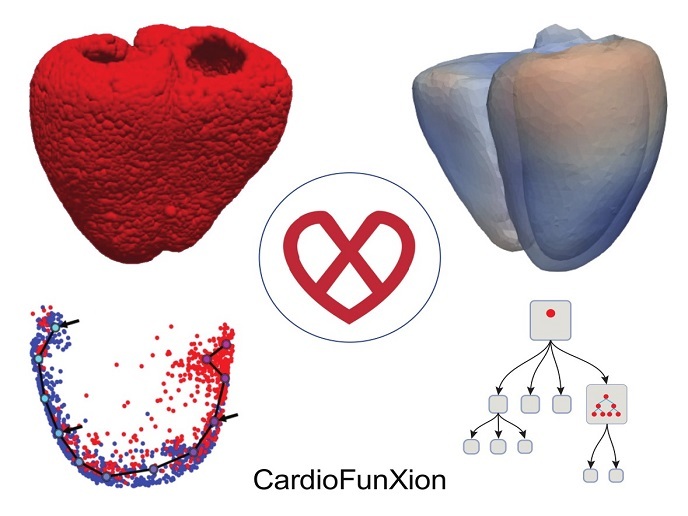An academia-industry alliance advances cardiac function assessment
Successful medical technologies intrinsically rely on close collaboration of research scientists, industrial engineers, who transform ideas into products, and clinicians who put these systems into practice. This cooperation is often challenging given the different work environments and communication language of each group of professionals.
Academia and industry cooperate towards novel tools
The CardioFunXion project has brought together academic researchers, clinicians and the imaging industry to develop the next generation of cardiac analysis tools to address this issue. The consortium included a large medical imaging company Philips, the Pompeu Fabra University, the Clinical Hospital of Barcelona in Spain, and the Centre Hospitalier et Universitaire de Caen and INRIA in France. With the support of the Marie Skłodowska-Curie programme, the project trained early-stage researchers (ESRs) in both academia and industry, offering them a holistic view of multi-disciplinary research. “The idea was to generate a toolbox that can transform heart images into information to help clinicians interpret cardiac function and advance diagnosis,” explains project coordinator Bart Bijnens.
CardioFunXion research into heart physiology
CardioFunXion applied different research projects to the longitudinal assessment of cardiac function and the fusion of heterogeneous measurements into physiological plausible representations. They also worked towards open reference databases and novel approaches for evidence-based classification of heart failure aetiologies. ESRs gained experience from working in diverse environments, allowing them to produce successful novel algorithms for image and data interpretation to assess cardiac function. A prime example is a heart physiology modelling tool that finely balances accuracy and computing time, and exploits ultrasound images. Clinicians can utilise this simulator tool in real time, avoiding the wait of long computations that usually slow down the process. Interestingly, by fusing heterogeneous data, scientists have come up with a totally new hypothesis that adults born with low birthweight due to placental problems show a much higher susceptibility to adverse cardiac effects such as smoking or obesity. Longitudinal follow up of clinical data obtained at different time points led to a new proposal for monitoring maternal and foetal health during labour, especially in low-income settings. “Overall, by comparing the available information on cardiac function and how it evolves over time, we are able to better predict adverse outcome as well as suggest appropriate interventions to prevent it,” emphasises Bijnens.
Project impact and future prospects
CardioFunXion researchers successfully developed new information analysis and management approaches for unsolved clinical questions. Collectively, the generated tools and clinical insight into cardiac issues has opened new avenues for further academic, clinical and industrial investigation. The project was also used as leverage for training a broader audience in human physiology. The www.bcnvph.org (Virtual Physiological Human Summer School (VPH)) started as a CardioFunXion training event and will now be organised by the www.vph-institute.org (Virtual Physiological Human Institute for Integrative Biomedical Research), a community-wide organisation linking researchers in the field. Similarly, CardioFunXion organised events around Artificial Intelligence in healthcare, in collaboration with the EU Joint Research Centre for Advanced Studies. “The beauty of CardioFunXion is that it provided future opportunities for all partners involved,” concludes Bijnens. ESRs are pursuing careers in industry or academia while the industrial partner is further developing the simulation tool and expanding its use and applications. Academic partners are continuing research in the field while clinicians are utilising the novel CardioFunXion insight to advance clinical practice.
Keywords
CardioFunXion, cardiac function, physiology, cardiovascular disease, simulator tool

